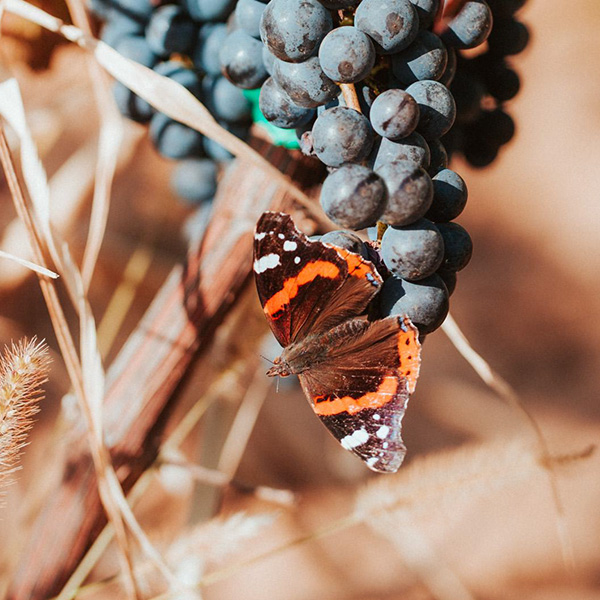Insect monitoring – what does it mean, and why is it important?
Darabont wines are the result of the hard work of Familia Darabont and their team. Although our dedication is unwavering, nature will have its say, and as in any other wine region, insects and pests can appear, which is a constant and persistent danger to the grapevines that all vintners have to deal with. What really matters is how we respond to these situations, so that the growing medium and cultures remain healthy and the quality is not compromised.
In order for production to be in line with the highest standards, proper monitoring is essential. Vineyard monitoring includes the study and benchmarking of insects, weeds and even microorganisms in the soil. These can cause significant damage if not detected in time. Malformed, small or spotted leaves, vines that seem to have difficulty growing and maturing, and the small size of the grapes can all be indicators of the presence of pests.
The monitoring process involves a number of recommended steps:
- identification of pests and the damage caused to vine crops
- determining the exact number of the pest population
- recording of management practices at each stage of grape cultivation
- carefully recording all observations

Visual observations should be the first to take place. Some crops need to be monitored at weekly intervals, if not more often, until the “threat” subsides. It is recommended that the same person make these checks, in order to observe, follow and record any changes as accurately as possible.
The benefits of monitoring are endless. It can be considered a prevention system through which appropriate strategies can be implemented before the number of pests or diseases increases to a catastrophic level. Moreover, monitoring allows for a variety of control responses, including the use of the pest’s natural enemies to one’s own advantage.
The examination process should take place according to a plan that takes the location of the crops into consideration, as only this can safeguard the efficacy of the whole process. The type of technique to use depends on the complexity of the plants we are trying to protect. Some pests can be considered universal, and can be monitored using conventional methods such as baits, sticky traps or plant surveillance. Sticky traps are extremely important because, with their help, we can detect the appearance of certain insects in advance, determine what species is most prevalent and most likely causing the damage, how much of the area is affected, and the migration patterns of the pests in question.
The most important methods for examination are:
- the various available insect traps
- pheromone traps (which use pheromones similar to those produced by insects)
- phenological calendar (correlated with climate change, oscillating temperatures, etc.)


By evaluating the insects and estimating their number, the most suitable response can then be designed, both in terms of costs and productivity, which at the same time protects the grapes and their immediate environs.

An important step, which can also be considered a method of treating the problem, is prevention.
Vineyards can be pre-emptively sprayed with materials that strengthen the immune system of the plants. Latent applications and continuous measures throughout the growing season protect plant tissue by reducing the number of spores and preventing fungal growth. It also protects the health of the vines, improves the quality of the grapes and increases the sustainability of the vineyard.
Monitoring technology
Proper soil and grape protection makes the plants less vulnerable and easier to grow, and greatly improves the quality of the end product. There are various applications on the market specifically designed to facilitate the monitoring process and help winemakers, such as TrapView (the one we use we in our day to day work).

These apps provide real-time, day-to-day information, regardless of the weather outside, recording every minute of the entire crop’s lifecycle. The data is stored and then analyzed, so that we can gain valuable insights to help generate profit, shorten growth time, eliminate potential risks, reduce costs and limit the use of pesticides and other harmful chemicals. The analysis can also predict the evolution and yield of the harvest and what measures to implement, depending on the scenario it is presented with.
For us, it is extremely important that the products and techniques we use work together to benefit nature, the soil and grapes, and in this regard, we feel that effective and non-invasive biological control is absolutely essential.



Bibliographical references






No Comments